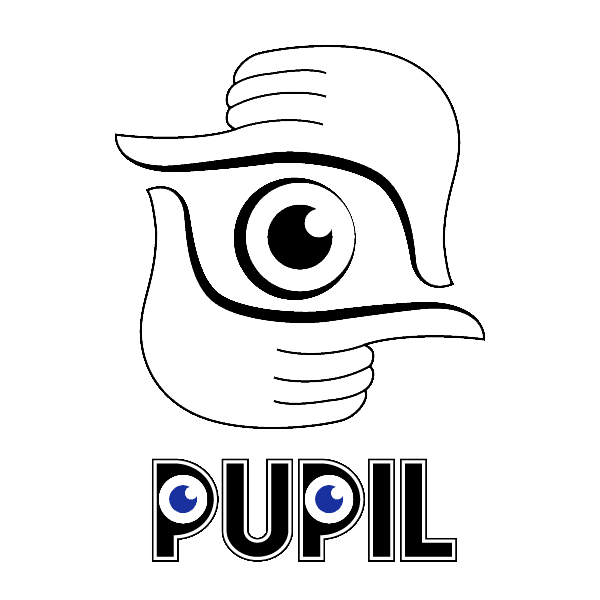Week 3 Summary
To get a design principles for the prototype, we visited Black Hawk High School to talk to educators and students about their curriculum and their education pattern. Also, We decided on platform that could simulate the interaction while not losing any view limitation. The solution we came up with is Pass-through VR: Oculus + ZED camera + Leap motion.
Black Hawk High School Visit
Thanks to help from John Balash, we got a chance to talk with Black Hawk high school educators and students. This visit was helpful for us to solidify our education design goals. We did not visit the high school to come up with the design. Rather, we tried to know subjects that educators having hard time to demonstrate or students having hard time to visualize. Educators there were non-STEM people, so we received a lot of insights on how to frame our educational design.
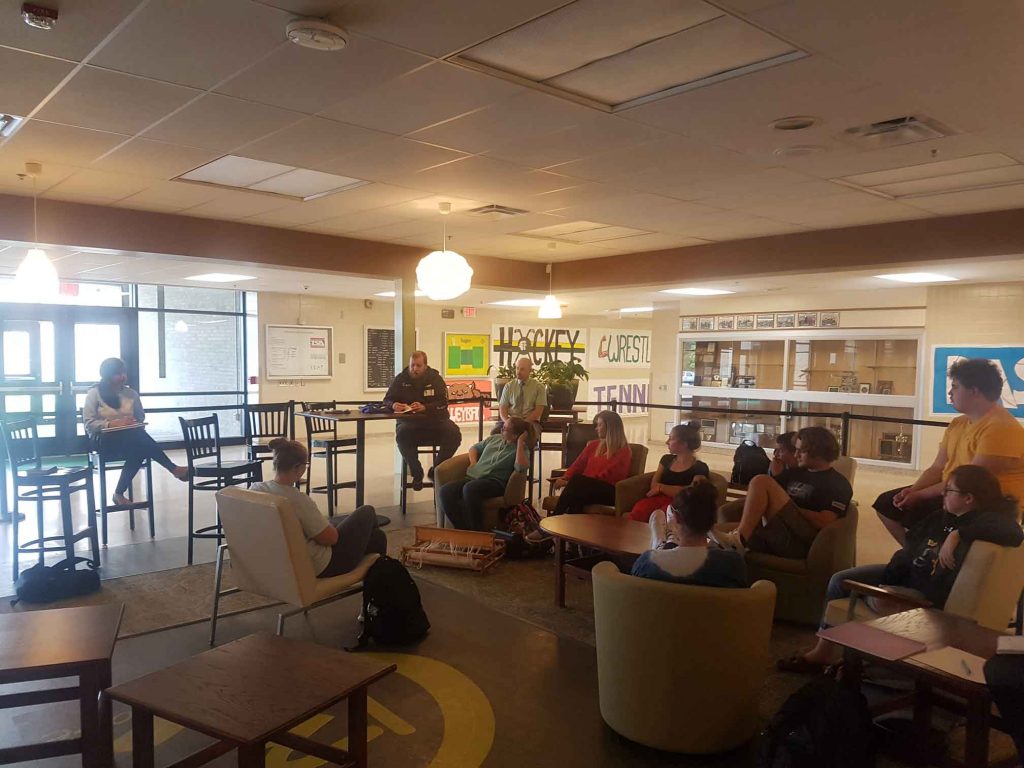
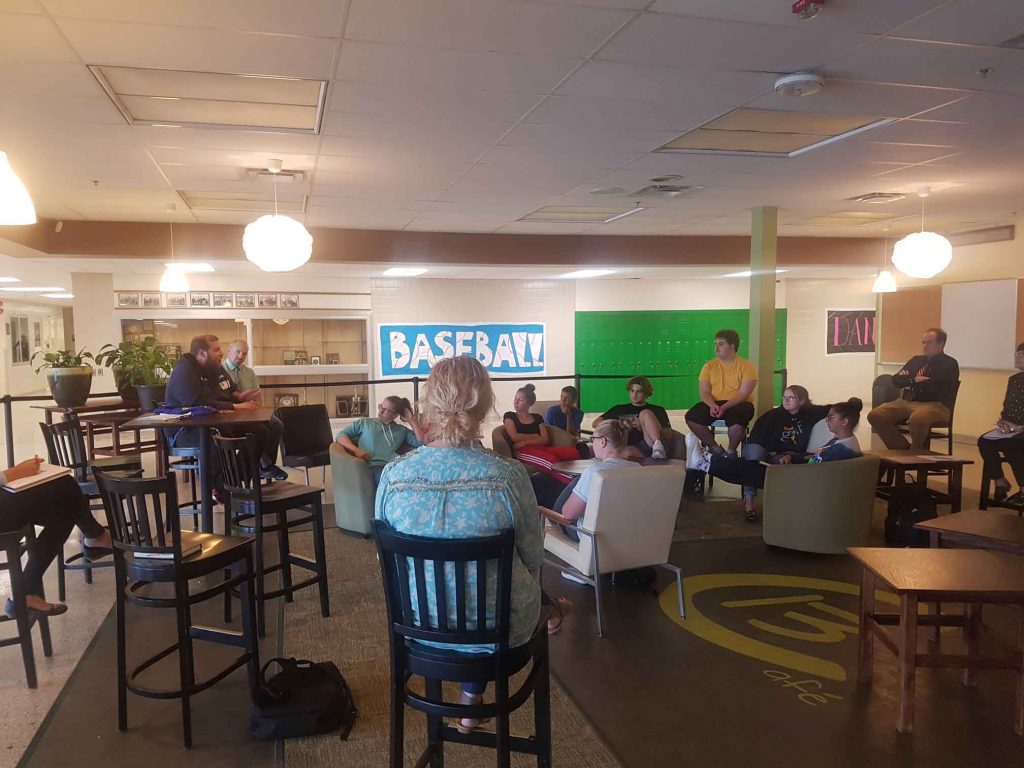
The feedback from the high-school visit gave us some interesting ideas. In particular, we encountered our first “design pattern” for the classroom – layers. Our high level concept for teaching biomes in the classroom prompted an archaeology teacher to say that would be useful to learn about fossils as well. The concept of layers also extends to other subjects, like the atmosphere, or human skin. Thus, a design pattern for how to interact with these virtual objects in AR would be useful across a number of disciplines.
Platform Decision
To begin building prototype, we settled our platform to Hololens and possibly, Magic Leap. However, we had hard time to get a development Kit for Magic Leap, especially integrating it with Unity. Since we want to rapidly prototype our design, we decided our platform as Hololens. However, we had a chance to explore the ZED camera. Pass-through VR looked promising in the videos, so we explored with ZED camera, along with Oculus and Leap motion for the better interaction.

As we explore this Frankenstein we made, we realized that this is the platform that can demonstrate future AR head-mount display interaction. There weren’t any restricted field of view like Hololens or Magic Leap. Also the interaction felt natural since the guest can use their hands to interact with virtual objects.
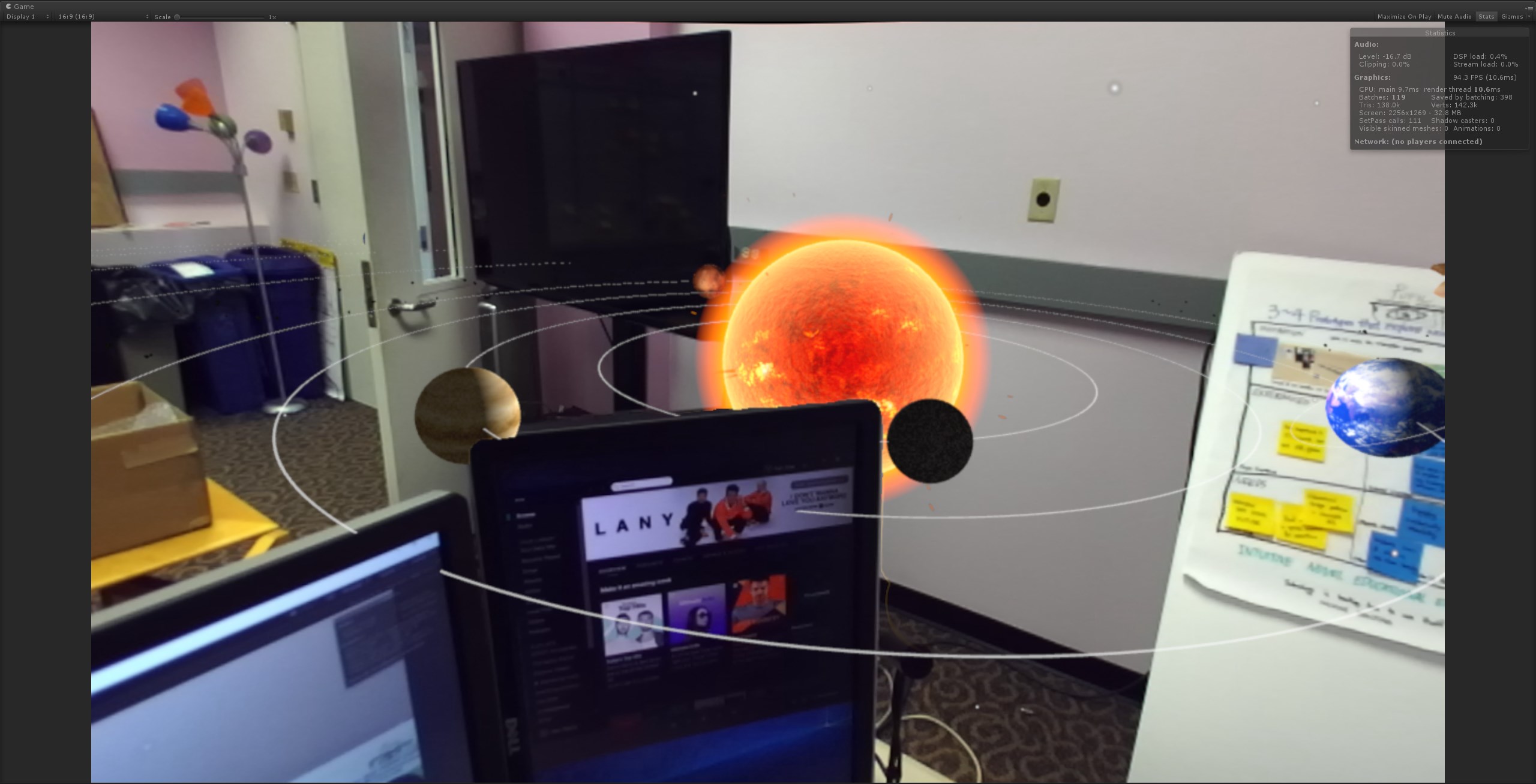
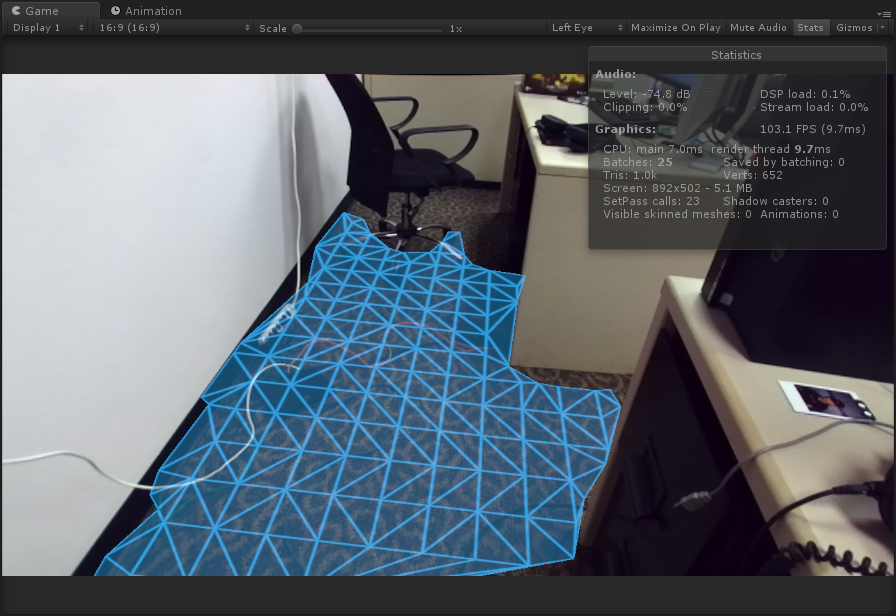
Prototype 1
Our team’s shared goal is to come up with math teaching prototype, so we can explore a head-mounted display AR education design. So, the prototype 1 focused on visualizing math concepts. High school 3D vector graphs was the subject the team wanted to tackle first.
This prototype explores the gesture language of 3D graph interaction in AR space, which is the first concept that our team had in mind. 3D graph interaction is hard concept to visualize on a 2D monitor. Also, the subject itself is hard to interact simultaneously. So, making an interactive 3D graph is a good goldspike to our team.
Prototype 2
Our second prototype aims for interacting with physical object to learn math concepts. Angles and geometry are hard to grasp in real time. Through image trackers, we will create an interactive physical object that shows angles as students make their own geometry.
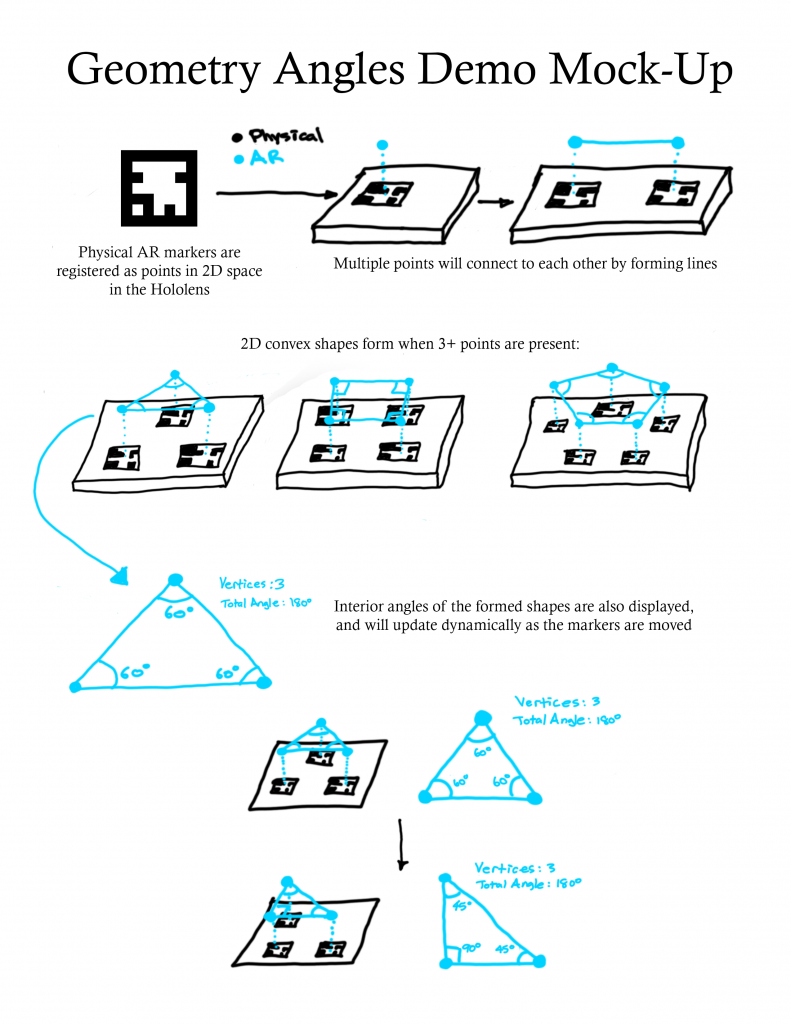
For this prototype, we mainly explore how we are going to involve physical object to AR education. For this platform we will use Hololens due to its strength in image tracking
